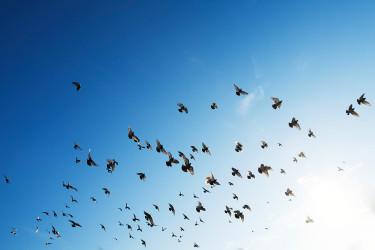 In honor of Spring and KDFC’s ‘Great Outdoors Week’, a sampling of “Birds in the Orchestra” – composers have long been writing instrumental imitations of birds… The cuckoo is probably the easiest to recognize, and it shows up in a variety of works. Since it was first possible to bring recordings into the concert hall, there have also been times when nothing but the actual sound of specific birds will do.
In honor of Spring and KDFC’s ‘Great Outdoors Week’, a sampling of “Birds in the Orchestra” – composers have long been writing instrumental imitations of birds… The cuckoo is probably the easiest to recognize, and it shows up in a variety of works. Since it was first possible to bring recordings into the concert hall, there have also been times when nothing but the actual sound of specific birds will do.
A cuckoo may have a fairly pedestrian birdcall, with only two notes, but Frederick Delius, Beethoven, and Handel all used it memorably (not to mention Laurel and Hardy’s theme music). Ottorino Respighi called for a recording of nightingale songs to be played from the stage in his Pines of Rome, and Finnish composer Einojuhani Rautavaara used field recordings of birds from the region to reflect the vast northern landscape of his Cantus Arcticus.
There are many other examples of composers taking their cues from the feathered set, famously the bird and the duck (flute and oboe, respectively) from Prokofiev’s Peter and the Wolf; the “Ballet of the Unhatched Chicks” from Mussorgsky’s Pictures at an Exhibition; Haydn’s Symphony #83 (The Hen); The Lark Ascending by Ralph Vaughan Williams. Mahler’s first symphony also has cuckoo calls, and Respighi wrote an entire work called “The Birds”. But among the most fervent champions of trying to replicate the sounds of bird songs was French composer Olivier Messaien, with titles like “Oiseaux exotiques” and “Catalogue oiseaux”.







